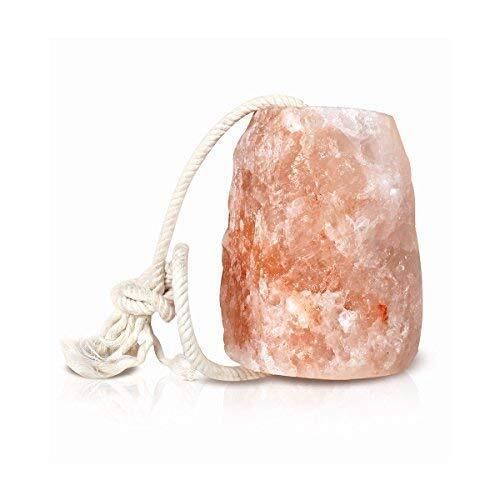Maximizing Livestock Health with Animal-Licking Salt

Keeping the animals healthy is a top priority for every farmer. They always look for ways to improve their lives, from food to the environment. Animal-licking salt is a great way to boost your livestock’s health. These salt blocks contain essential minerals that help them grow, strengthen their immune systems, and keep them feeling good. Easy to use and loved by animals, licking salt is a simple and effective way to keep your livestock healthy and growing.
Types of Salt Lick Blocks
Animal licking salts come in various types, and the kind you need depends on your animal’s nutritional requirements. Below are some of the types:
- Plain Salt Blocks These are basic salt lick blocks with just sodium chloride. They give animals important electrolytes and are good for general salt needs.
- Mineral-Enriched Blocks These blocks have a mix of important minerals like calcium, phosphorus, magnesium, and trace elements. They give animals all-around nutrition, targeting specific mineral deficiencies in their diets.
- Iodized Salt Blocks Iodine is important for animals’ thyroid and reproductive functions. Iodized salt blocks give them a steady supply of iodide, helping keep their thyroid and reproduction healthy.
Importance of Mineral Supplements for Livestock
Our soils often lack essential minerals like sodium, which livestock need to stay healthy. To fix this, farmers use cattle lick salt to give animals the minerals they need. Early farmers noticed this problem and added salt to hay and sometimes used fertilizer from local sources. Studies have shown that mineral salt blocks can help livestock gain weight.
Himalayan salt licks are a great source of salt and minerals for cattle, horses, and other livestock. They provide the essential nutrients animals need at all stages of life, making them an important part of daily feeding.
A lack of salt in livestock diets can lead to muscle cramps, rough coats, reduced appetite, and unusual licking and chewing behaviours. It can also result in decreased production. Dairy cows are especially vulnerable to salt deficiency and, if deprived for too long, may even collapse and die.
Farming Methods
Here are the farming methods which farmers use for placing salt licks.
1. Smart Placement
Farmers put salt lick blocks where animals can easily get to them, like near water and grazing areas. This makes sure animals can have their salt without any problems.
2. Seasonal Changes
Farmers change how often they give salt lick blocks based on the season and what the animals need. For example, they might give more in hot summers or when animals are having babies.
3. Monitoring Consumption
Farmers should keep an eye on how much animals use salt lick blocks. Big changes from normal could mean there’s a problem, like health issues or not enough nutrients.
Benefits of Himalayan Salt Lick for Animals
Animal licking salts offer many benefits to the livestock for maintaining their health. Some of the benefits are as under:
Replacing Other Supplements
Animal-licking salt provides important minerals like sodium, chloride, potassium, magnesium, calcium, iron, zinc, and trace elements. These minerals help animals stay healthy, digest food, and keep their bodies working right.
Preventing Dehydration
If animals don’t get enough salt, they might get dehydrated. Giving them mineral blocks ensures they get the nutrients they need to stay healthy and hydrated. Farmers give mineral blocks to animals to keep them hydrated and prevent them from getting sick often.
Promoting Cattle Growth
Low salt levels can cause problems like goitre in animals, just like in humans. It can also make cattle grow slowly and produce fewer products.
Keeping Coats and Hooves Healthy
The minerals in licking salt blocks help animals have healthy skin, coats, and hooves. This keeps them from getting certain skin problems and helps them feel good overall.
Weather Resistance
Himalayan salt licks are tough and can withstand different weather conditions. This makes them great for use outside, ensuring animals always have access to the essential minerals they need.
Potential Issues and Solutions
Usage of animal-licking salt can also cause some issues in the animals. Some of the issues with their solutions are mentioned below:
Overconsumption:
Though rare, animals can sometimes eat too much licking salt. This can make them very thirsty and cause them to urinate a lot. To prevent this, always provide fresh water and keep an eye on their salt intake.
Not Enough Minerals:
If livestock don’t get enough minerals, they might grow poorly, have trouble reproducing, or get sick more often. Giving them access to licking salt regularly can help avoid these problems.
Environmental impact:
Make sure salt blocks are placed where they won’t harm water sources. Use eco-friendly methods to handle any environmental impact.
Health Monitoring:
Check your animals’ health regularly and adjust their salt intake as needed. Talk to a vet about how to include licking salt in their health plan.
Conclusion
Salt licks have come a long way, from simple feed options to important nutritional additives for animals. Whether given as a block or dissolved in water, they’re vital for animals’ diets, keeping them healthy and growing well. By using the latest tech and good practices, farmers can make sure their animals get the most out of licking salt, improving their nutrition on the farm.
Frequently Asked Questions
What are the signs of mineral deficiencies in livestock?
Signs of not getting enough minerals can be slow growth, trouble with having babies, weaker immune systems, and tummy problems. Using licking salt often can help stop these issues.
Can all types of animals use the same licking salt?
No, different animals need different kinds of nutrients. So, it’s important to choose a licking salt made just for the type of animal you have, like cows, sheep, or goats.
Are Himalayan pink salt licks safe for animals?
Yes, Himalayan pink salt licks are safe for animals when used properly. Just keep an eye on how much salt they eat, especially if they have health issues like kidney problems.
How long does a Himalayan pink salt lick last?
It depends on the size of the block, how many animals use it, and the environment. Usually, a Himalayan pink salt lick can last a few weeks to a few months as animals lick it slowly.
